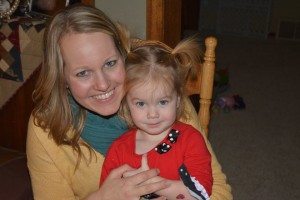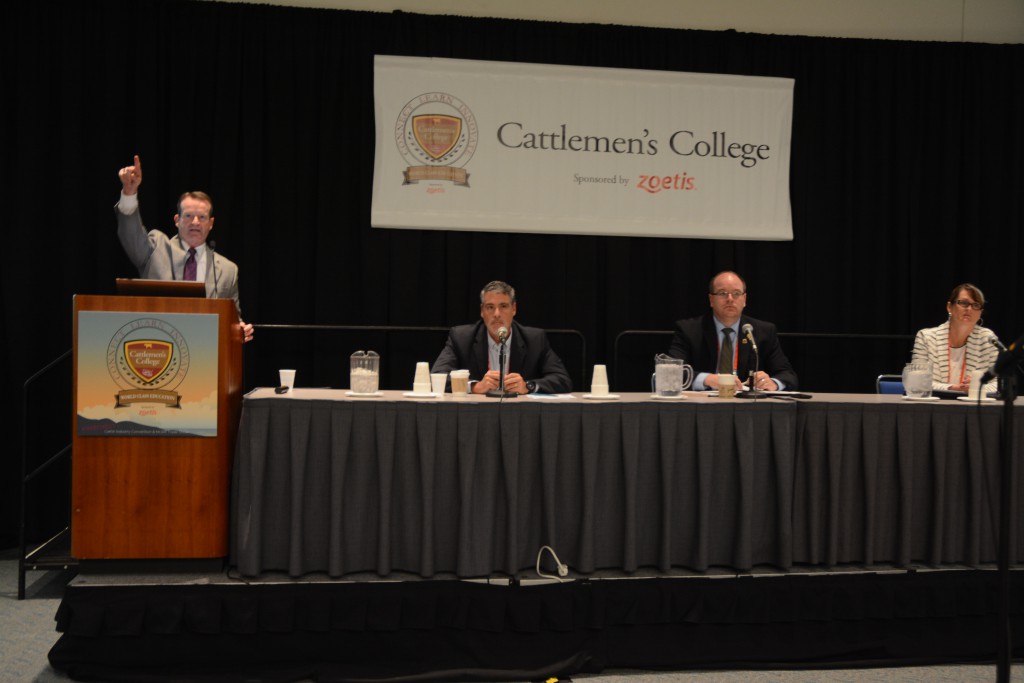
ROI felt more than measured
 “You da best mom in da whoooooole wurrrld!”
“You da best mom in da whoooooole wurrrld!”
My two-year old utters that phrase and her bubbly grin and a stubby ponytail remind me that she’s getting older every day. It makes me want to make that statement true.
I want to be a better mama each day, but only have a finite amount of time to make it happen. And there’s no way to really know if I’m accomplishing that goal.
We can look at clues: that my kids are (mostly) happy and well-adjusted. That they treat others with respect. That they know a thing or two about the way the world works. Still, there is no easy way to quantify it.
[I know, this is not a parenting blog. Hang with me a moment longer and I’ll make my point for the cattle community.]
I whole-heartedly know the effort is worth my physical and emotional investment, though I might never see a balance sheet that quantifies a return on investment (ROI).
And so it is with sustainability in the beef business.

“Premiums and revenue and return on investment show themselves in different forms. I think that’s the key. I cannot sit here today and tell you we’re going to see an economic signal paid for sustainably that’s as vivid and real as the one that we see today for getting paid by weight,” he said. “It’s really about demand protection and growth.”
The Global Roundtable for Sustainable Beef (GRSB), describes sustainability as, “environmentally sound, socially responsible and economically viable.” Of course, it all boils down to the first basic truth I know about cattlemen and women: they want to do the right thing.
But if you want to talk in economic terms, it’s just as easy to explain why we all have a stake in this: sustainability is a means of maintaining and growing beef demand. It’s about keeping consumer confidence high.

Yes.
Could we do better?
Yes.
“It’s really a low-risk, high-opportunity chance to bring people together and have communication and dialog. We’re all focused on the same end point,” John said. “This is not a threat. It’s an opportunity.”
Parenting and sustainability have one more thing in common, because as John pointed out, “You never really arrive.”
May your bottom line be filled with black ink,
Miranda
To read more on this session, or many others form convention, visit the newsroom at www.4Cattlemen.com.
You may also like
$100,000 Up for Grabs with 2024 Colvin Scholarships
Certified Angus Beef is offering $100,000 in scholarships for agricultural college students through the 2024 Colvin Scholarship Fund. Aspiring students passionate about agriculture and innovation, who live in the U.S. or Canada, are encouraged to apply before the April 30 deadline. With the Colvin Scholarship Fund honoring Louis M. “Mick” Colvin’s legacy, Certified Angus Beef continues its commitment to cultivating future leaders in the beef industry.
Raised with Respect™ Cattle Care Campaign Launched This Fall
Raised with Respect™ was developed as part of a strategic cattle care partnership between Sysco and CAB. The collaboration focuses on supporting farmers and ranchers, equipping them with continuing education to stay current on best management practices and helping to increase consumer confidence in beef production.
Quality Wins, Again
Sara Scott, Vice President of Foodservice for Certified Angus Beef, emphasizes the importance of taste over price in the beef market during the Feeding Quality Forum. As consumer demand for high-quality beef grows, Scott highlights the need for increased supply and encourages communication with packer partners to meet the demand for Prime beef.



